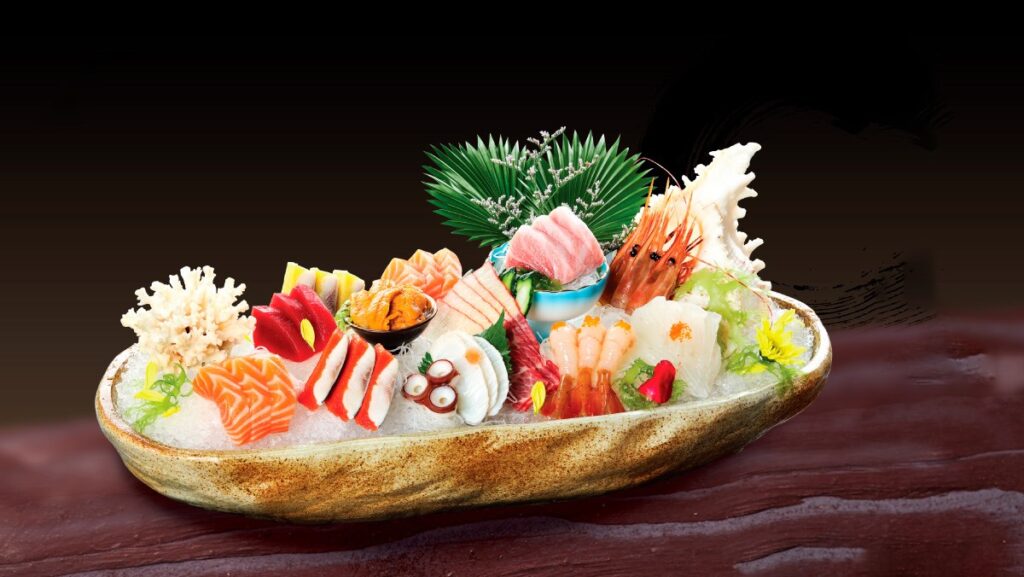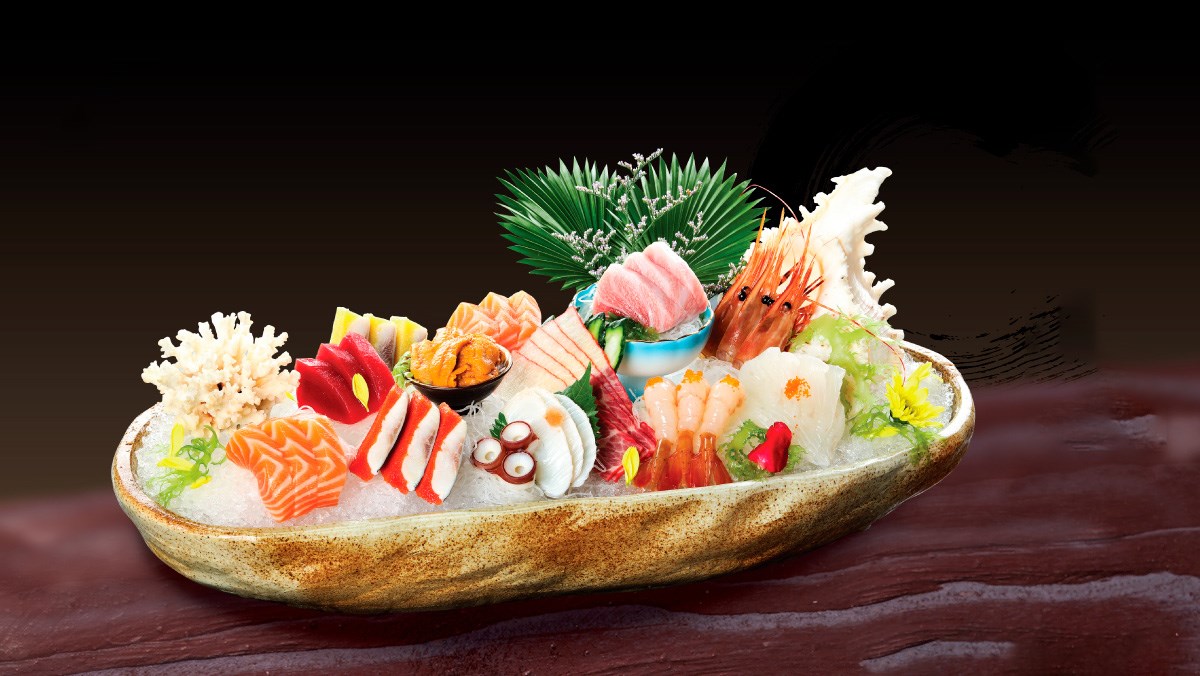
What is Sashimi? How to Eat Sashimi Like a Japanese Person, and the Difference Between Sushi and Sashimi
Japan has a rich and diverse culinary tradition, ranging from various dishes to fresh seafood like sashimi. Today, Điện máy XANH’s section will introduce you to what sashimi is, how to eat sashimi like a true Japanese person, and the differences between sushi and sashimi!
1 What is Sashimi?
Sashimi is one of the traditional Japanese dishes.
The people of the Land of the Rising Sun always pay attention to the preparation method, presentation, and meaning of each dish. Therefore, in the hands of professional chefs, sashimi is considered a work of art due to its extremely delicate and beautiful presentation.
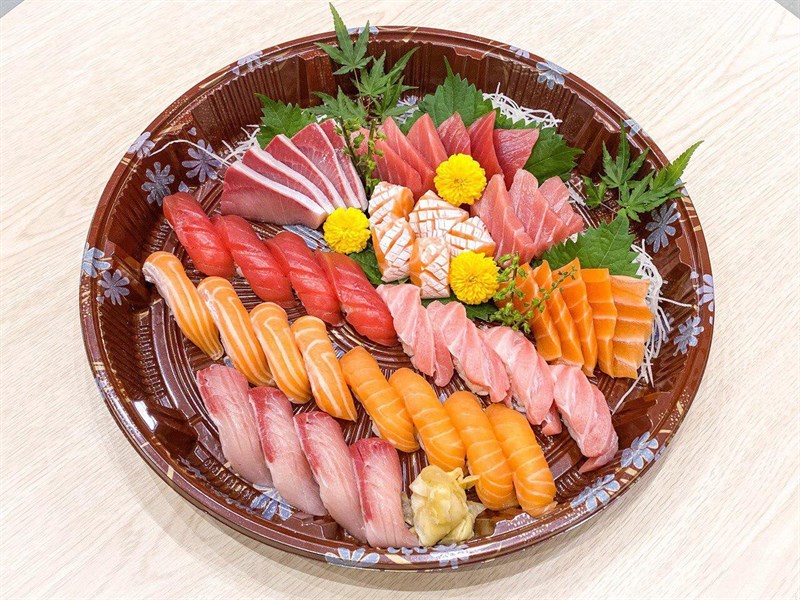
Because of its meticulous presentation, diners are always mesmerized by this vibrant dish from the first glance. Although it is fresh seafood, the fish is not fishy but very sweet, fatty, and cool, combined with a little bit of spiciness and sourness, making it very attractive. Because it’s combined with warm spices, sashimi is a cold dish but warms the stomach when eaten.
When enjoying it, diners will feel a spicy aroma. Then comes the sweet taste of the meat combined with premium, rich soy sauce, melting in the mouth. Not only delicious, but these fresh seafood also contain many essential nutrients for our bodies. This is the uniqueness, characteristics, and perfection of this “one-of-a-kind” dish.

3 Types of Fish and Seafood Used for Sashimi
Types of Fish Used for Sashimi
Types of fish used for sashimi include: , , , , pufferfish, , sea bream, carp, , Kinmedai (Japanese Splendid Alfonsino), Hamachi (Japanese Amberjack). All are prepared fresh to preserve the natural sweetness and fattiness, along with high nutritional value that benefits health.
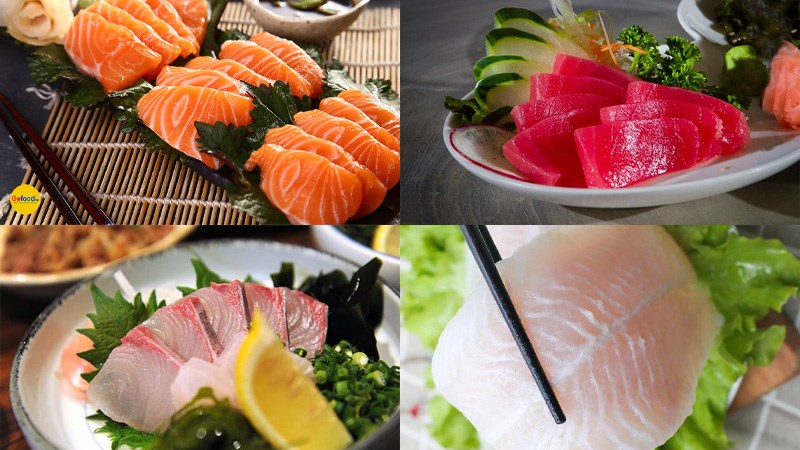
Types of Seafood Used for Sashimi
Fresh and delicious seafood such as surf clams, , , , Tsubugai snails, , hairy crabs,… all have a natural chewy texture, sweet aroma, and high nutritional content.
Therefore, these ingredients are also used to prepare sashimi, making the dish more diverse and nutritious.
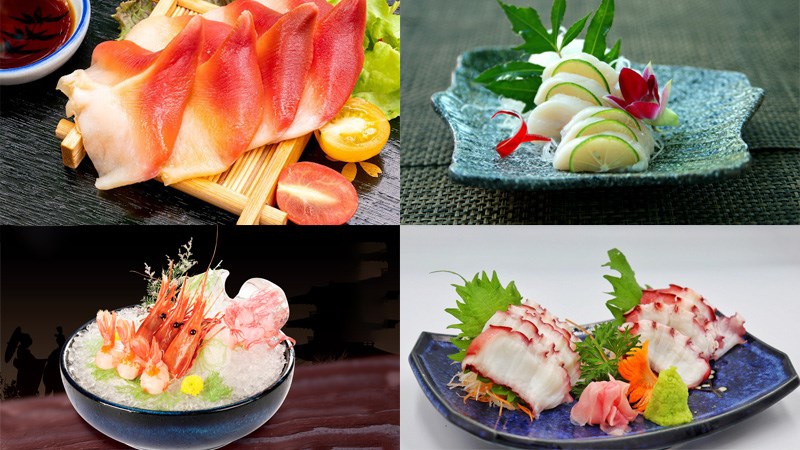
Other Types
In addition, the Japanese also add variations to make the dish more unique and attractive by using , horse meat, turtle meat, deer meat sliced thinly or to make this delicious dish.
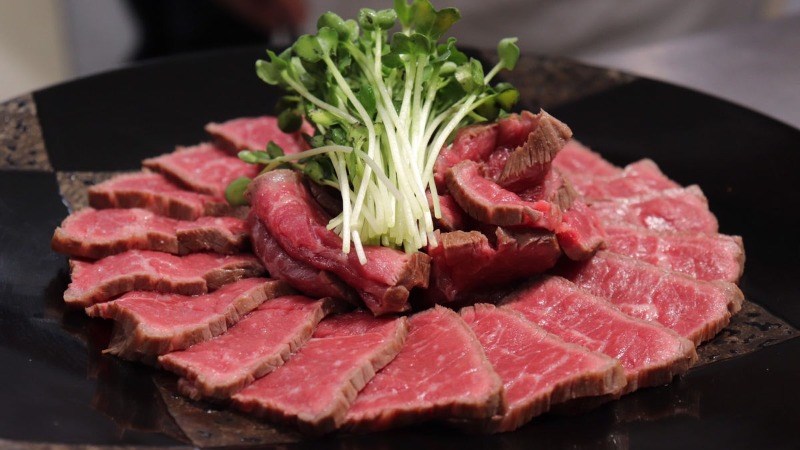
3 How to Prepare Authentic Sashimi
After catching fish with professional fishing rods, a large sharp nail is used to pierce through the fish’s head, killing it instantly, then it’s chilled.
When the fish dies suddenly, it secretes less lactic acid. Therefore, the meat of these fish is very fresh and can be preserved for up to 10 days.
The chef will cut the fish into silk-like slices, 4cm long, 2cm wide, and about 0.5cm thick decisively, and then arrange them on ice in a delicate and beautiful way.
Then, add some , fresh, shredded and, of course, , soy sauce to enhance the rich flavor of the sashimi.
The combination of fresh ingredients with spicy seasonings creates a very nutritious dish with a delicious aroma, awakening all the senses. This is the wonderful point that makes sashimi popular and loved by many people around the world.
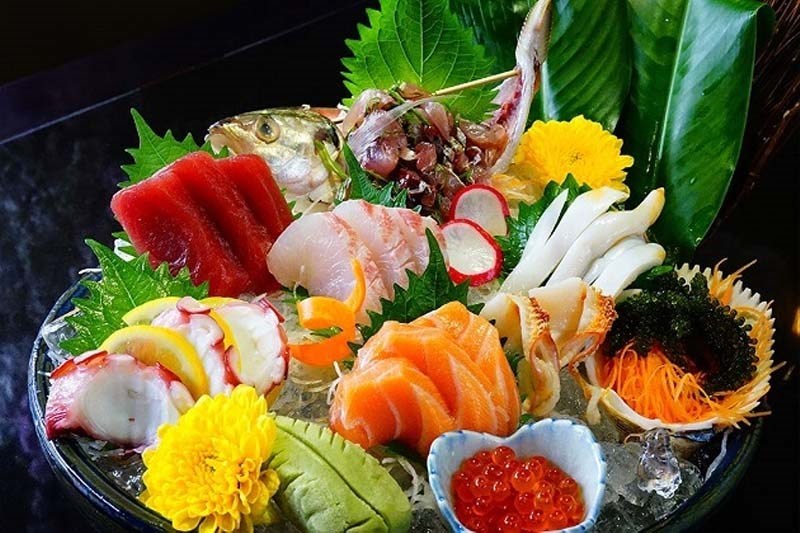
4 How to Eat Sashimi Like a Japanese Person
How to Eat Sashimi Authentically
First, use chopsticks to take a piece of fish from the sashimi plate. Then, put a little wasabi in the middle of the fish and fold it. Finally, dip it in soy sauce and enjoy. This way of eating will help you fully experience the sweetness combined with a little spiciness of authentic sashimi.
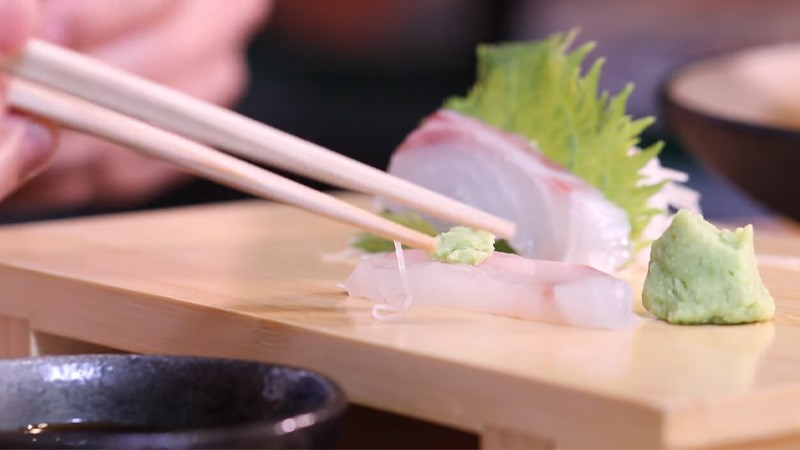
Incorrect Ways to Eat Sashimi
Mixing wasabi with soy sauce
Many people have the habit of mixing wasabi with soy sauce before dipping the sashimi in. This is incorrect and will ruin the original flavor of the fresh seafood.
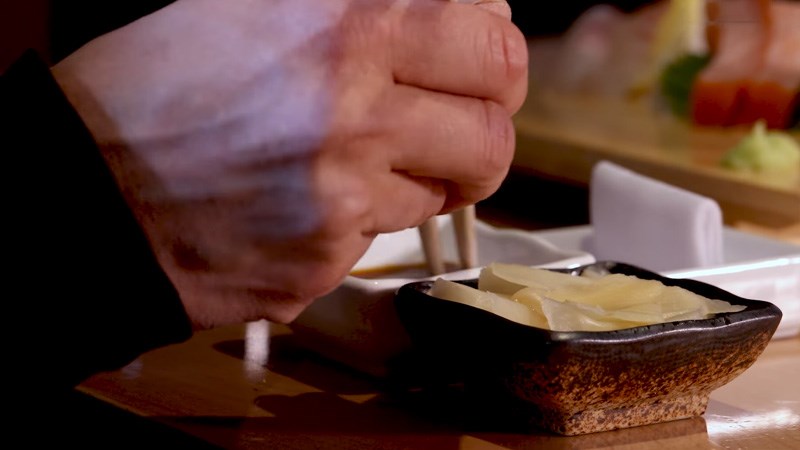
Biting into small pieces of sashimi
One of the worst ways to enjoy sashimi is to pour some cooking oil on the fish and bite into small pieces. This way of eating will prevent you from fully experiencing the sweet, fatty, spicy, and sour flavors of sashimi.
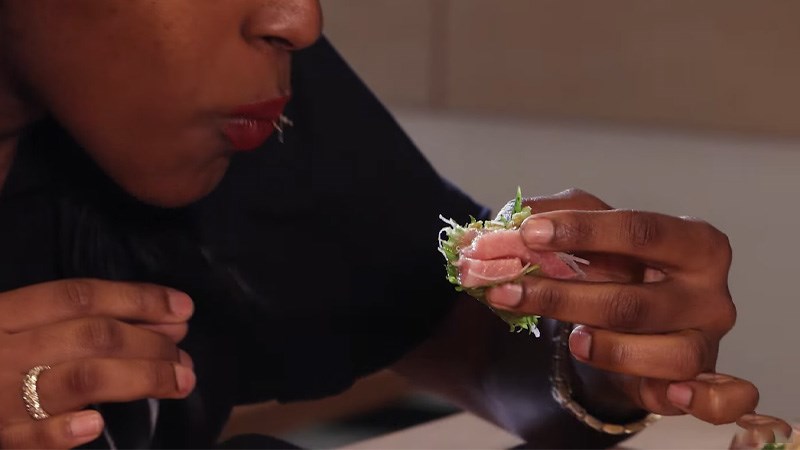
5 Types of Sashimi
Sake sashimi (Salmon)
Salmon sashimi is always among the top sashimi dishes sought after and loved by many. This is completely reasonable as raw salmon is delicious.
It has a rich, sweet taste; when dipped in soy sauce or wasabi, it becomes even richer. Moreover, the nutritional content in this type of fish is very high, and eating it raw does not diminish this nutritional value.
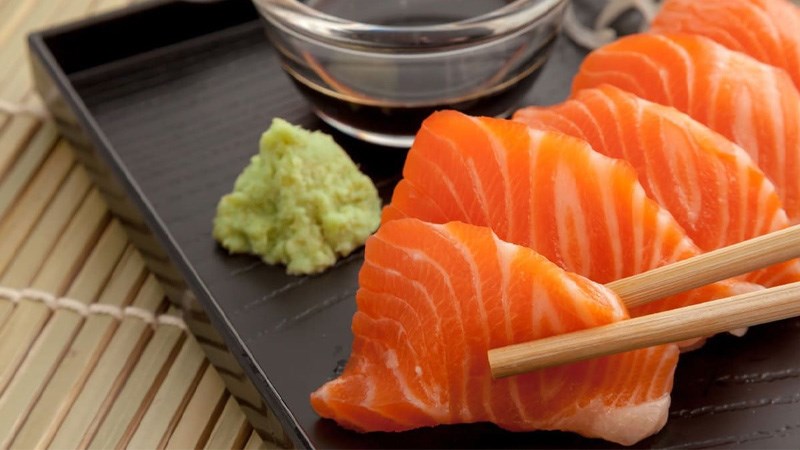
Fugu sashimi (Pufferfish)
Pufferfish is a type of fish highly valued by connoisseurs for its extremely delicious and unique flavor. However, it contains a lot of toxins and needs professional preparation to provide a dish that is both delicious and safe for health.
Because it is rare and strictly prepared, this sashimi dish usually costs more than other sashimi dishes.

Tuna sashimi (Tuna)
Depending on the part of the tuna, it has a different name. For example, the dark red meat with less fat is called Akami. The meat deep inside is reddish-pink, called Chutoro, with high nutritional content and fat, tender and sweet meat, so it is loved by many people.
In addition, people also use tuna belly – Otoro to make sashimi; this part is taken from the lower belly, contains a lot of fat, so it tastes fattier than other parts.
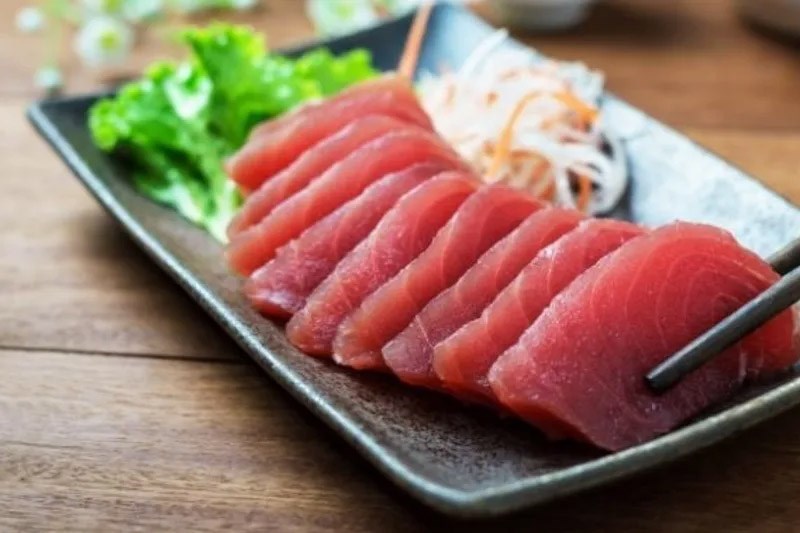
Ika sashimi (Squid)
Besides fish, squid – Ika is also a popular sashimi in Japan. There are many types of Ika, each with its own flavor, but generally, they all have a sweet and chewy taste. Moreover, fresh squid also contains a lot of , DHA, and other nutrients that are good for health.
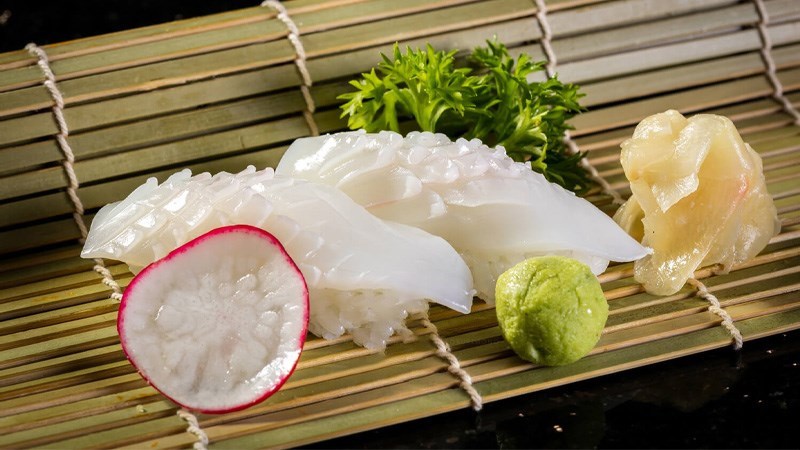
Tako sashimi (Octopus)
Like Ika sashimi, octopus – Tako is also a familiar ingredient in fresh sashimi dishes.
Compared to squid, octopus has a sweeter and chewier texture, so it is prepared in a more diverse and abundant way. With this ingredient, you can prepare many sashimi dishes with a delicious and irresistible flavor.
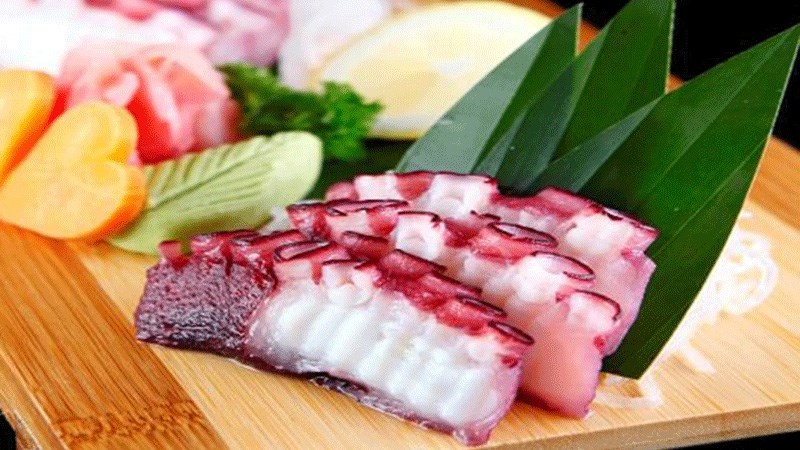
Suzuki sashimi (Sea Bass)
In summer, sea bass – Suzuki is an attractive choice for fresh sashimi dishes. Because at this time, the fish has more fat, so the meat quality is also improved.
The highlight of the dish is the white, shiny fish meat, which looks very beautiful. Suzuki sashimi has a soft, sweet, and light taste; when chilled on ice, the meat becomes even fresher and tastier.
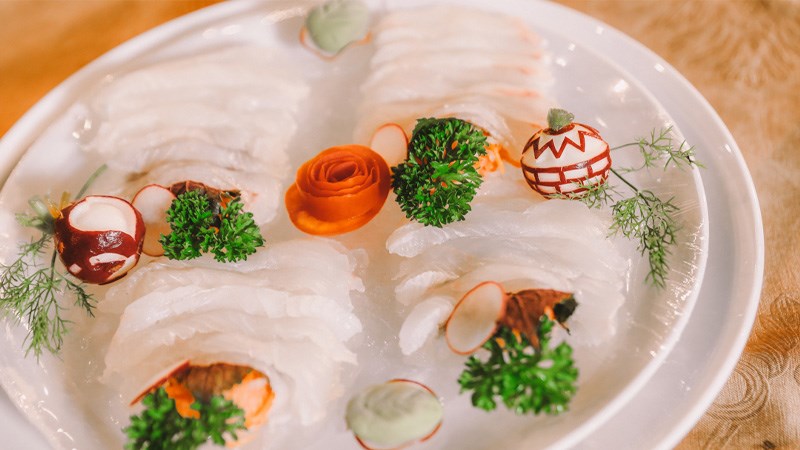
Hokkigai sashimi (Surf Clam)
Besides being prepared as grilled dishes, surf clams – Hokkigai are also made into sashimi. Their red color seems to become more attractive and glossy when placed on ice.
Hokkigai sashimi is not chewy but very juicy and has a certain crispness. When combined with wasabi and soy sauce, it becomes even more perfect. Therefore, Hokkigai sashimi is always among the top favorite sashimi dishes.

Basashi sashimi (Horse Meat)
Not only seafood, sashimi is also diversified with delicious horse meat – Basashi.
Basashi sashimi has a reddish-brown color that looks very beautiful. The meat is thinly sliced, with a sweet taste and a slightly unique taste of horse meat. Because it is combined with ginger slices, sake, and soy sauce, the meat does not have a fishy smell but is very fragrant and rich.
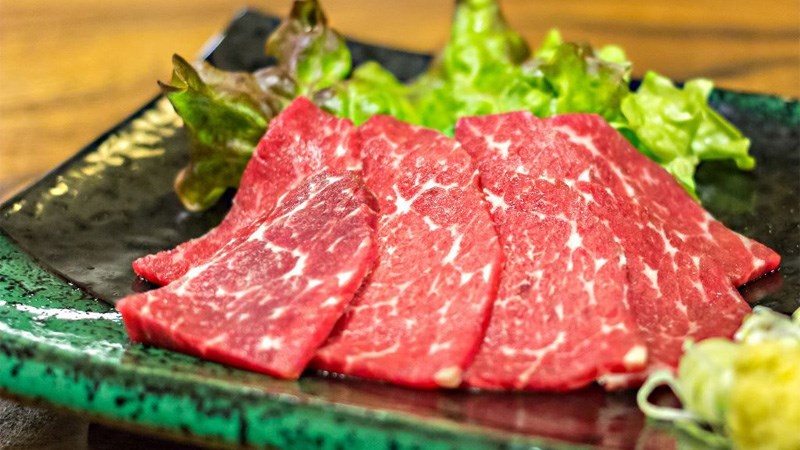
Ikura sashimi (Salmon Roe)
Salmon roe is rich in nutrients such as , DHA, and , so this food is prepared into many dishes, including sashimi. The dish makes you exclaim in praise just by looking at it because of the red and orange roe clustered together, which is very beautiful.
Ikura sashimi has a sweet, slightly fatty taste; when eaten, it creates a popping sensation in the mouth. For the Japanese, this is considered a premium dish that provides abundant nutrients to the body.
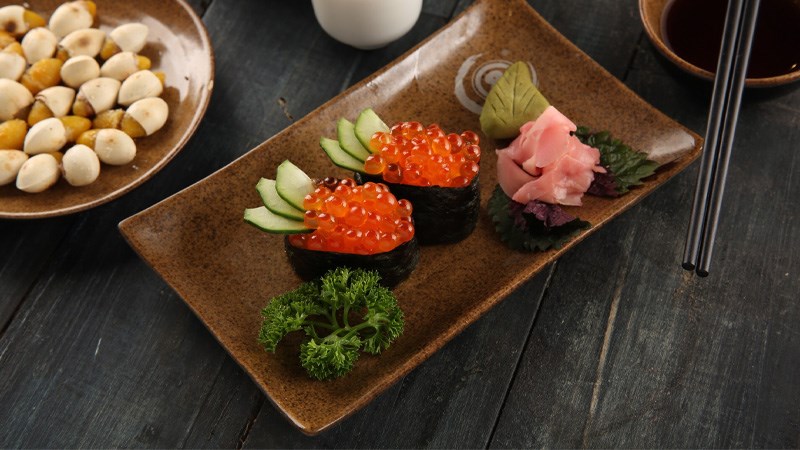
Amaebi sashimi (Sweet Shrimp)
Sweet shrimp – Amaebi has firm, sweet meat and soft shells, so it is often chosen by chefs to make sashimi. When eaten, the shrimp is juicy, tender, and perfectly blended with the spiciness of wasabi and the saltiness of soy sauce, so it is loved by children and adults alike.

Kapanchi sashimi (Orange Roughy)
Japanese orange roughy – Kapanchi only lives in offshore waters and has a fresh, pure taste, so it is very suitable for making sashimi.
Kapanchi sashimi has a reddish-pink outer edge and a light pink inside, which is very delicate. The fish has a sweet and fatty taste that harmonize well, so it is considered a high-quality ingredient of restaurants in Japan.
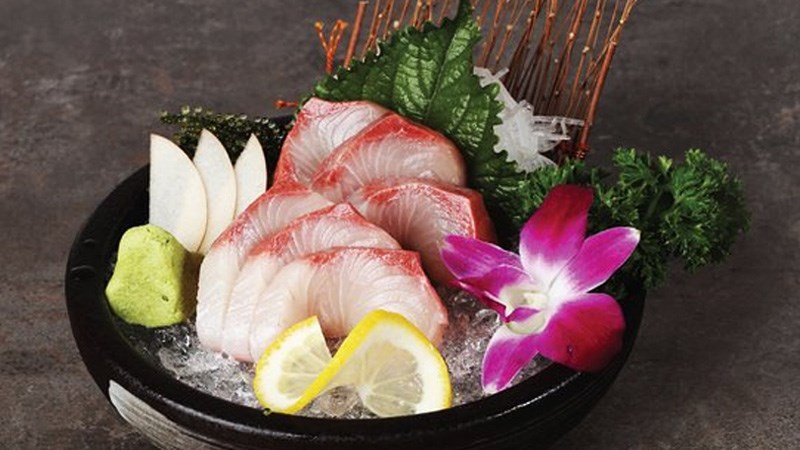
Hotate sashimi (Scallop)
Not only , , scallops – Hotate in Japan are also made into sashimi with an extremely delicious flavor.
The meat of the scallop is located between the shell, presented very attractively. Because it has a chewy texture and a natural sweet taste, it is not fishy but very rich, so Hotate sashimi is always sought after to enjoy its flavor.

6 How are Sushi and Sashimi Different?
| Criteria | Sushi | Sashimi |
| Ingredients | White rice, with raw fish, fish eggs, fried eggs,… | Fresh seafood |
| Presentation |
Rice is formed into bite-sized pieces (blocks) with fish or eggs on top. Rice and other ingredients are rolled in seaweed and cut into round slices. |
Seafood is thinly sliced. |
| Accompaniments | Soy sauce, wasabi, and pickled ginger. | Soy sauce, wasabi, combined with perilla leaves, ginger, and julienned white radish. |
| Eating Style | Main course | Appetizer |
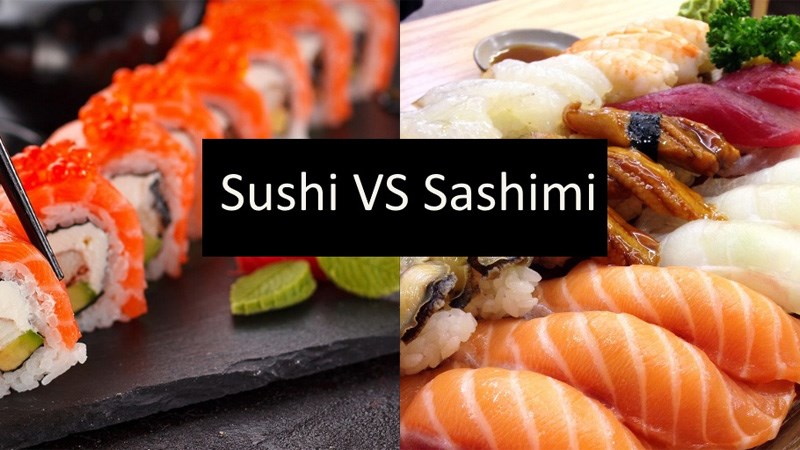
The above is information about the dish? How to eat Japanese sashimi, and the difference between sushi and sashimi. It’s interesting, isn’t it? Visit the Cooking Tips section to learn more about other unique dishes from this country!
https://vi.wikipedia.org/wiki/Sashimi
Accessed: 11/10/2021



